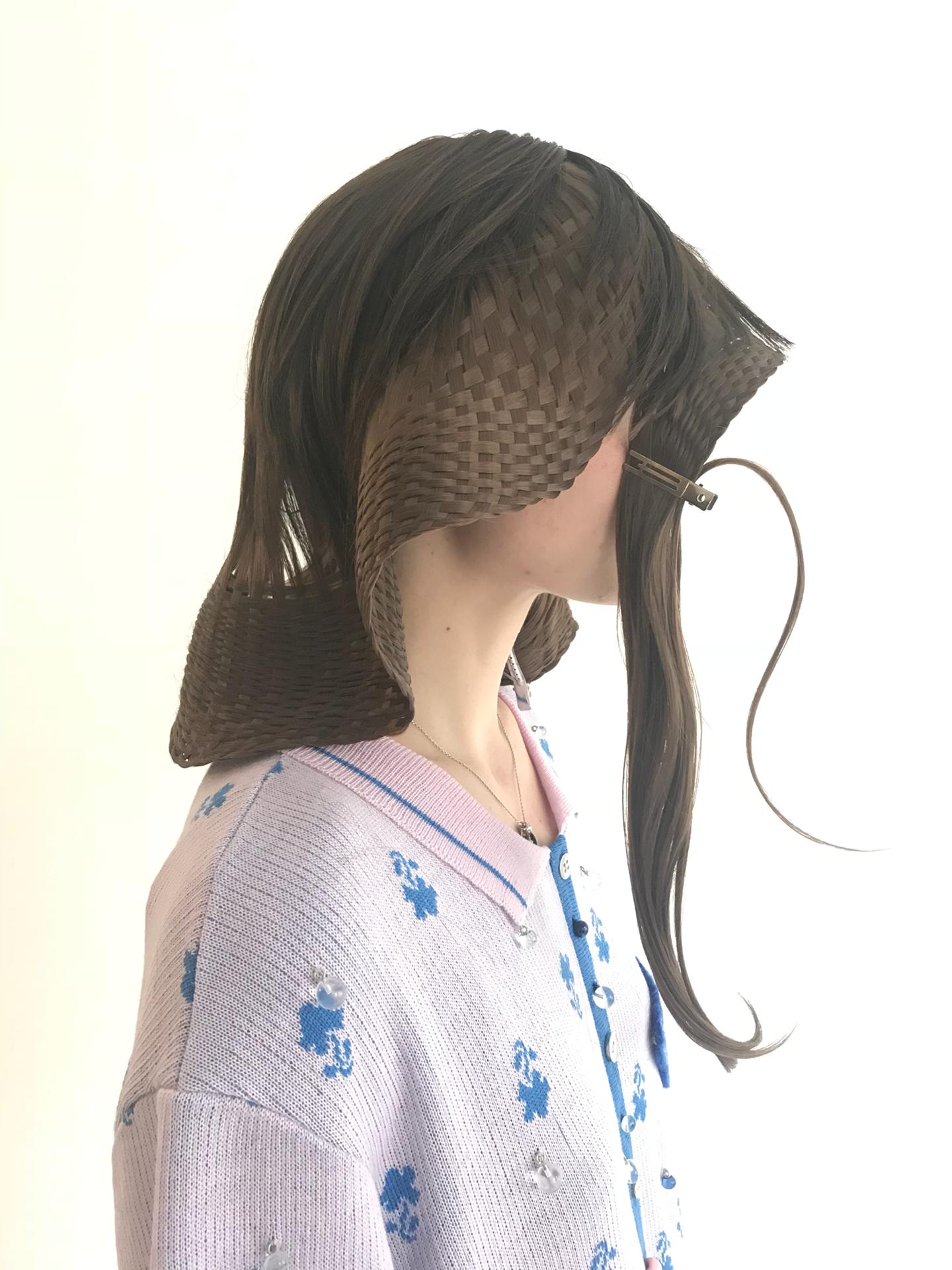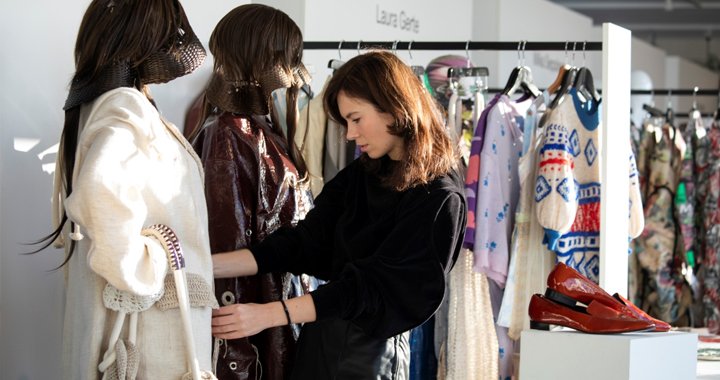
Everyone is a part of fashion
04/12/2019
Last week the Latvian creative community was delighted by news that the fashion designer Sabīne Skarule had received the prestigious H&M Design Award 2020. Established in 2012 with the aim of supporting young designers, i.e. graduates of fashion schools in the early stages of their careers, this was the ninth time the award was presented. The H&M Design Award was open to both undergraduate and graduate students graduating from 42 art schools in a total of 17 countries. Sabīne Skarule submitted her application as a graduate of the Royal Academy of Fine Arts in Antwerp, Belgium, with her master's project collection titled +371. Her inspirations included childhood memories and Latvian handicraft traditions in a contemporary interpretation. Ann-Sofie Johansson, Creative Advisor at H&M, described it as ‘a very emotional collection’.
Arterritory.com met up with Skarule for a quick talk.
.jpeg)
Ann-Sofie Johansson, Creative Advisor at H&M and member of the H&M Design Award 2020 jury with Sabine Skarule , winner of H&M Design Award 2020 in Berlin.
What were you thinking about when you were creating the collection that would go on to win one of the most prestigious awards for young artists?
When I began to think about my master's project, the +371 collection, I was living in New York and working at The Row. Although it was an inspiring time overall, the nature of the fashion industry – which is extremely fast, demanding, and follows certain rules – in addition to being far away from home, influenced me. I was somehow naturally overcome by a melancholy that stemmed from a longing for the place that I come from – sentimentality about childhood and its unhurriedness, simplicity, and close connection to nature.
When I began to create the collection, it was not yet clear to me where I was going and what it would end up being, but I knew that I wanted to put these feelings into it.
In addition to the cash prize, the winner is also offered an internship at H&M headquarters in Stockholm, which can be exchanged for a grant if the winner so wishes. What was your choice, and why?
I chose the grant because I have a vision that I have been striving to attain for over ten years. As long as I can remember, I've always wanted to create my own brand. On the one hand, it’s not all that complicated – anyone can do it. But it is important to me that it be marketable and that it finds its spot in the big jungle of the fashion industry. I’ve been working toward this goal for a long time and have given it much thought.
I have had experience working at fashion houses in New York, and now it’s time to realise my idea; the H&M prize will help me do this without having to make any compromises.
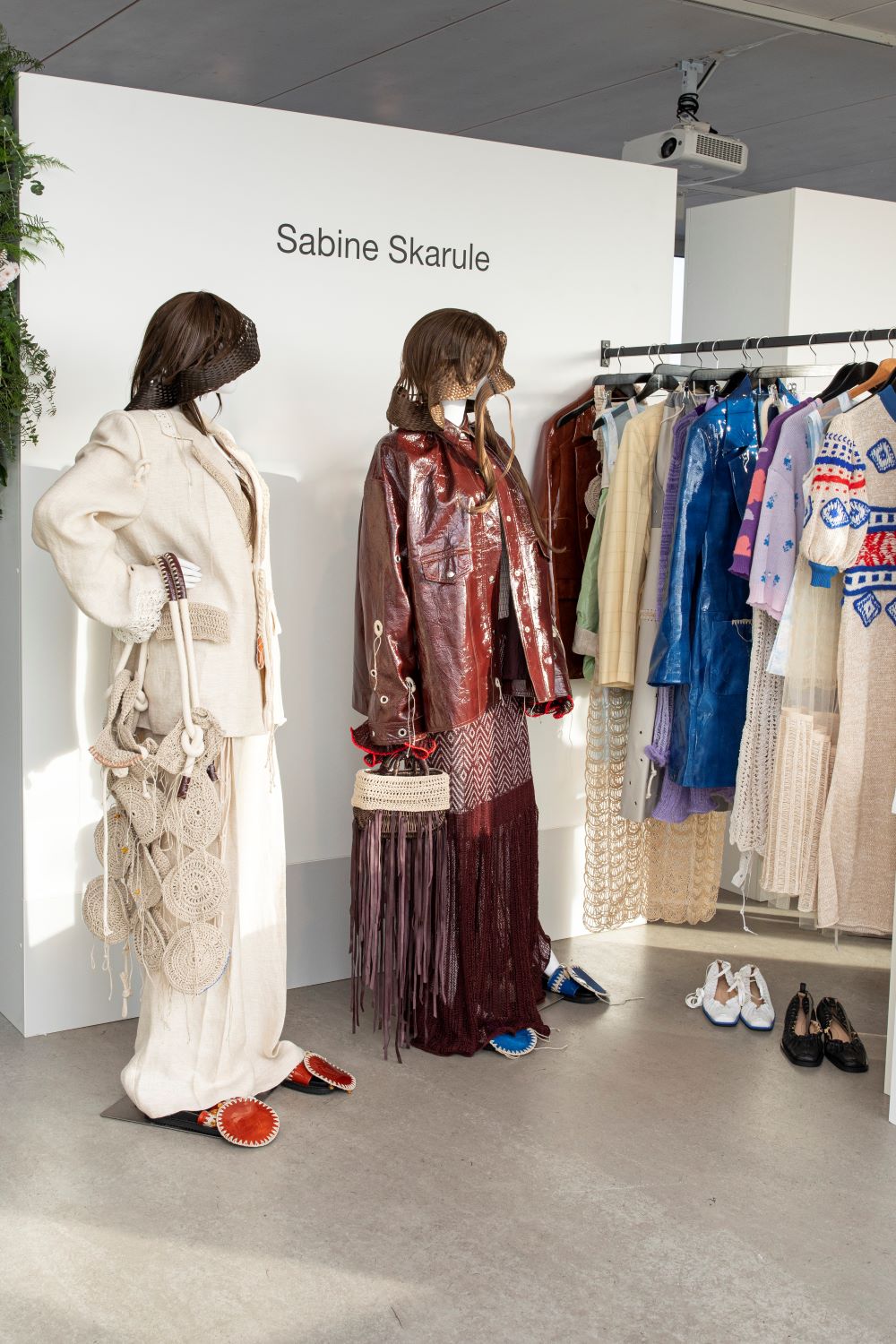
How do you see the future of fashion – and your own as a designer – at a time when climate change is one of the forefront issues facing the world? It is no secret that the nature of fashion is that of a double-edged sword. As the Danish fashion designer Henrik Vibskov said during a recent visit to Riga, any seemingly environmentally friendly solution he chooses has its own side effects (the growing of organic cotton consumes more water than conventional cotton, etc.). In his view, the only solution that would really mean genuine and radical change would be the utopian idea of putting a halt to the industry for ten years, thereby encouraging people to consume what they already have in their closets or what has already been produced. And during this period, fashion designers, in collaboration with scientists, would develop a vision for the future development of the industry that would truly be environmentally friendly.
I was also mentioned in that lecture by Henrik Vibskov. I have thought a lot about this topic, and I must admit that it troubles me. Climate issues are a problem not only in the context of fashion, but in all areas of life: food, transport, architecture, non-recyclable materials, etc. We need to think about how we are living and how we want to live in the future. Currently, the average consumer does not want to get into it. In my opinion, fashion will always exist and no one can stop the industry; it is a part of our culture and its language. However, it is important to distinguish between ‘high’ fashion and ‘fast’ fashion. A growing number of the industry’s brands are opting for transparency – they are revealing where the garments are being produced and the materials being used. Currently the biggest problem is mass production. It’s like a huge rubbish dump, and it’s suppressing the joy in what I do.
My collection was created on a base of childhood memories of knitting sweaters with my mother. It was a time when we couldn't buy clothes, so we had to sew and knit everything ourselves. With this approach, each garment had a completely different value – it had to be taken care of rather than discarded after its second wearing.
At the school in Antwerp there were often lectures dealing with sustainable fashion design. For example, Close The Loop | Sustainable Fashion Platform talked a lot about fibers and fabrics that are more environmentally friendly. Also, Mr. Kurino and the ITC Ethical Fashion Initiative addressed this topic, and it was their representative who inspired me to work with Latvian artisans. The emergence of such companies and the discussion of this particular issue, in my opinion, is progress that will influence the future of the fashion industry.
What would you say are the three main things that you learned about fashion when studying at the Royal Academy of Fine Arts in Antwerp?
Fashion is, first and foremost, design, not art.
Fashion involves a lot of work, and the Royal Academy of Fine Arts in Antwerp taught us the difference between ‘liking’ fashion and creating fashion.
You may like fashion or you may not like it, but everyone is a part of it.
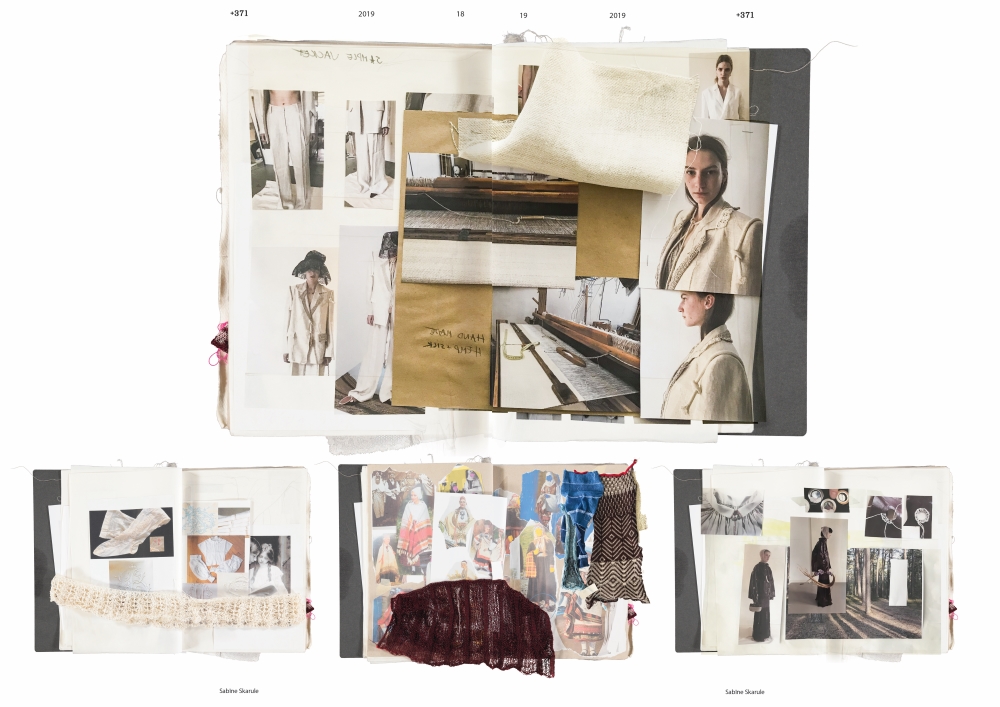
In accepting fashion as a universal language, how rich and versatile it is today? What is its message?
In my opinion, it is somewhat eclectic today. It is difficult to say exactly what is the most characteristic feature of current fashion because everything is being mixed together. In fashion there is both minimalism and maximalism, and both discreetness and creative abundance. I think we’re living in a great time when there is absolute freedom in everything.
The knitting techniques and patterns used in your collection were inspired by childhood memories, i.e. in the pre-internet era. In essence, it embodies a contemporary interpretation of your ‘genetic code’. Why was this important to you at this time?
I wanted to pause the flowing of time for a moment, which is fast and uncontrollable right now. To be together with Latvian artisans so that, just like in my childhood, I could again feel the joy in what I do. Unlike most manufacturers in the fashion industry, artisans do their job for the joy and love of it.
Of course, it is very important for me at the moment to be aware of my national identity/ethnic heritage. In fact, this has been relevant ever since I entered the Royal Academy of Fine Arts in Antwerp where there is an international environment and, much like in sports, it is no longer individuals competing but nationalities. In my opinion, the Baltic States are a region that is still undiscovered and interesting for others at the moment.
How has the digital era changed the fashion industry?
Information moves at rocket speed. Everything is possible, and everything is available and within reach. This is, of course, good and bad at the same time. For me as an emerging designer from Latvia, it is wonderful because I can communicate on a daily basis with consultants, investors, mentors, etc. through social media and without having to change my location.
How is a person influenced by what they wear?
It affects them in everything. It affects their attitude, self-esteem, conviction, belonging, freedom.
I can’t speak for others, but when I wake up in the morning, I’m not always in the best of moods and clothing helps to change that.
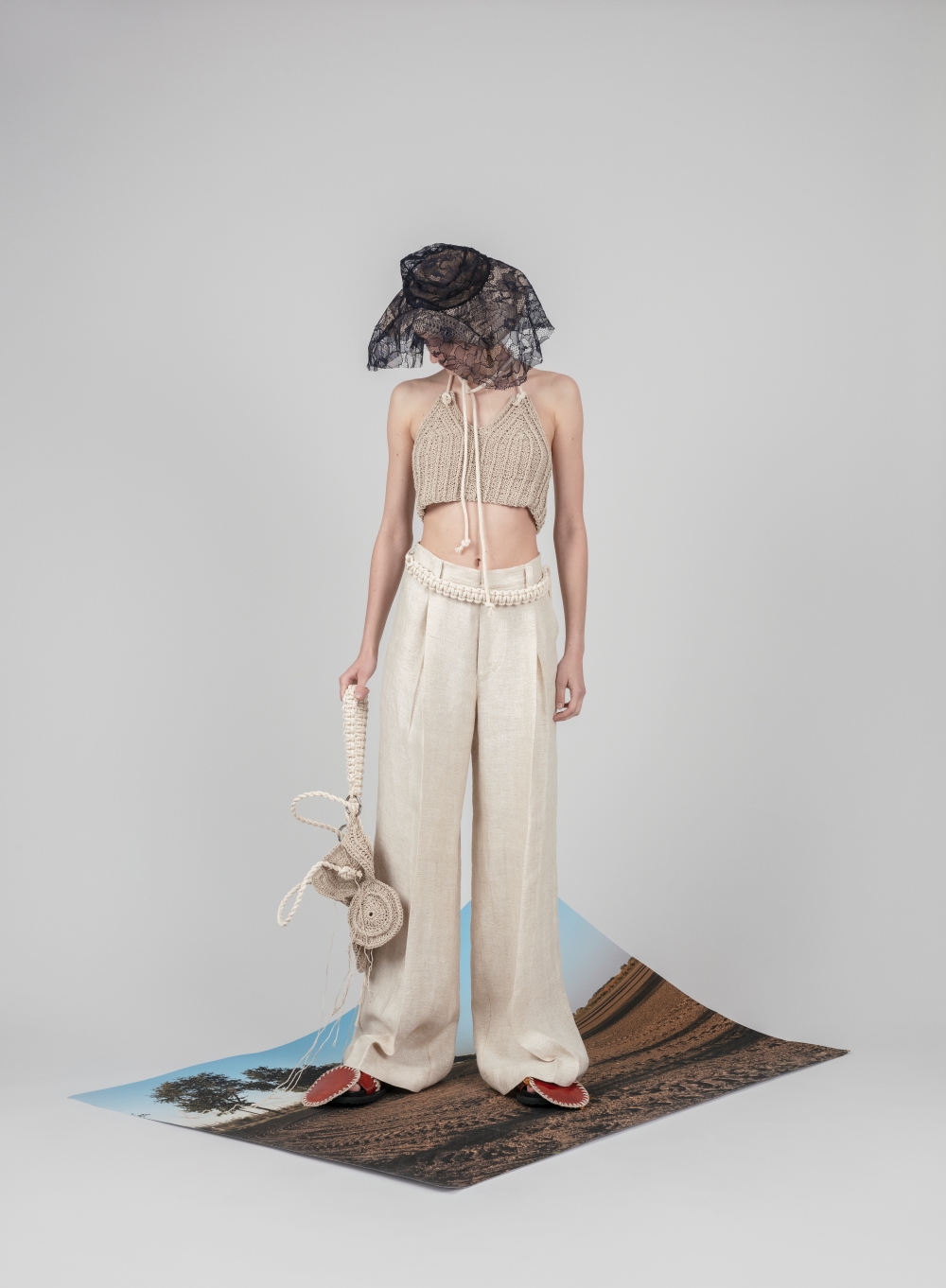
How is a designer influenced by the place where they create? Do you see Latvia as being the headquarters of your brand?
It influences it very much. I have already mentioned my childhood spent in close contact with the Latvian outdoors. I grew up with very inspiring and creative young people from different backgrounds. But when building my collection, my mentors – Walter van Beirendonck, Dirk van Saene, Manon Kundig, and Dries van Notten – gave me the strength, encouragement and confidence to trust my mentality and experience.
Right now I still have to spend some time abroad, even though that would not really be my choice – I need to accept that for now.
